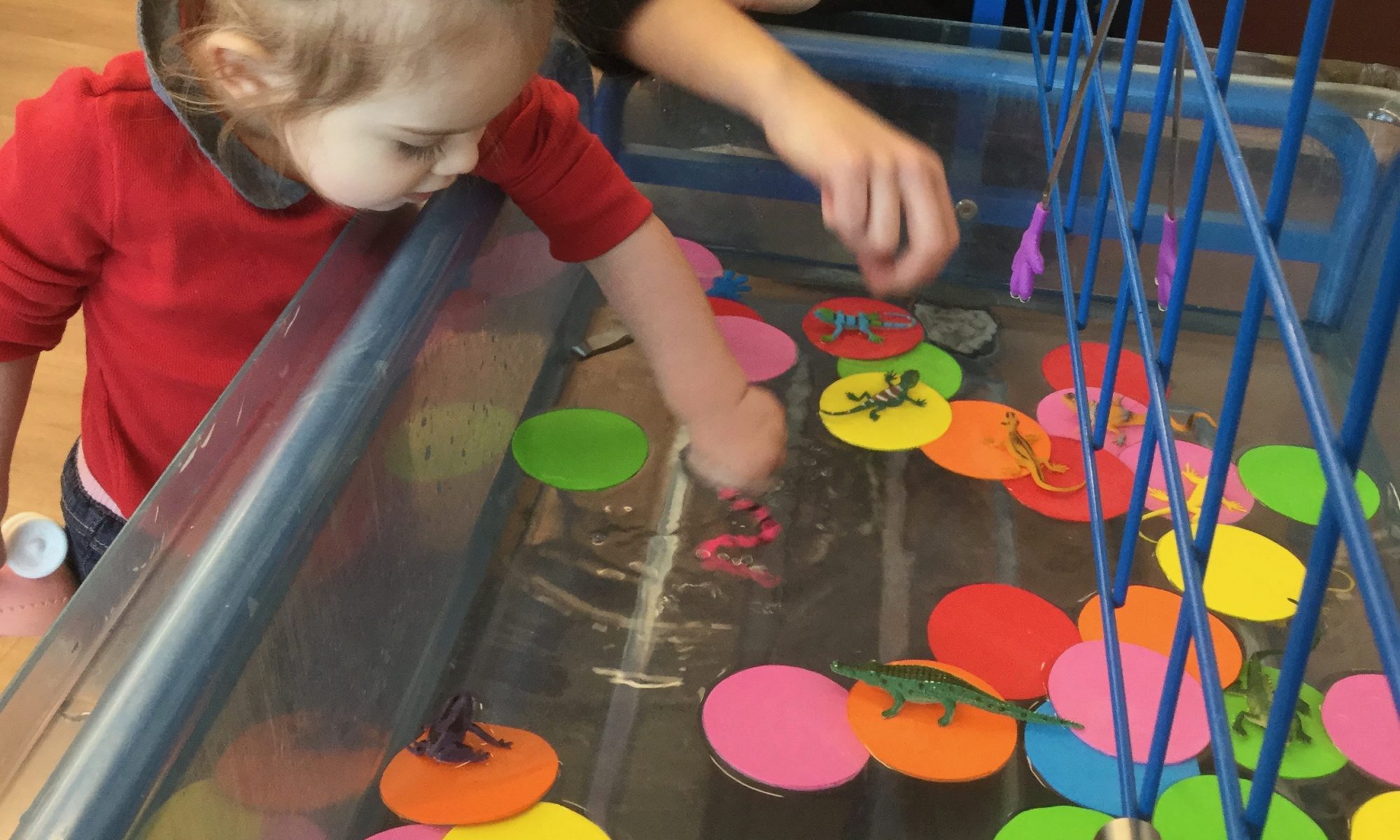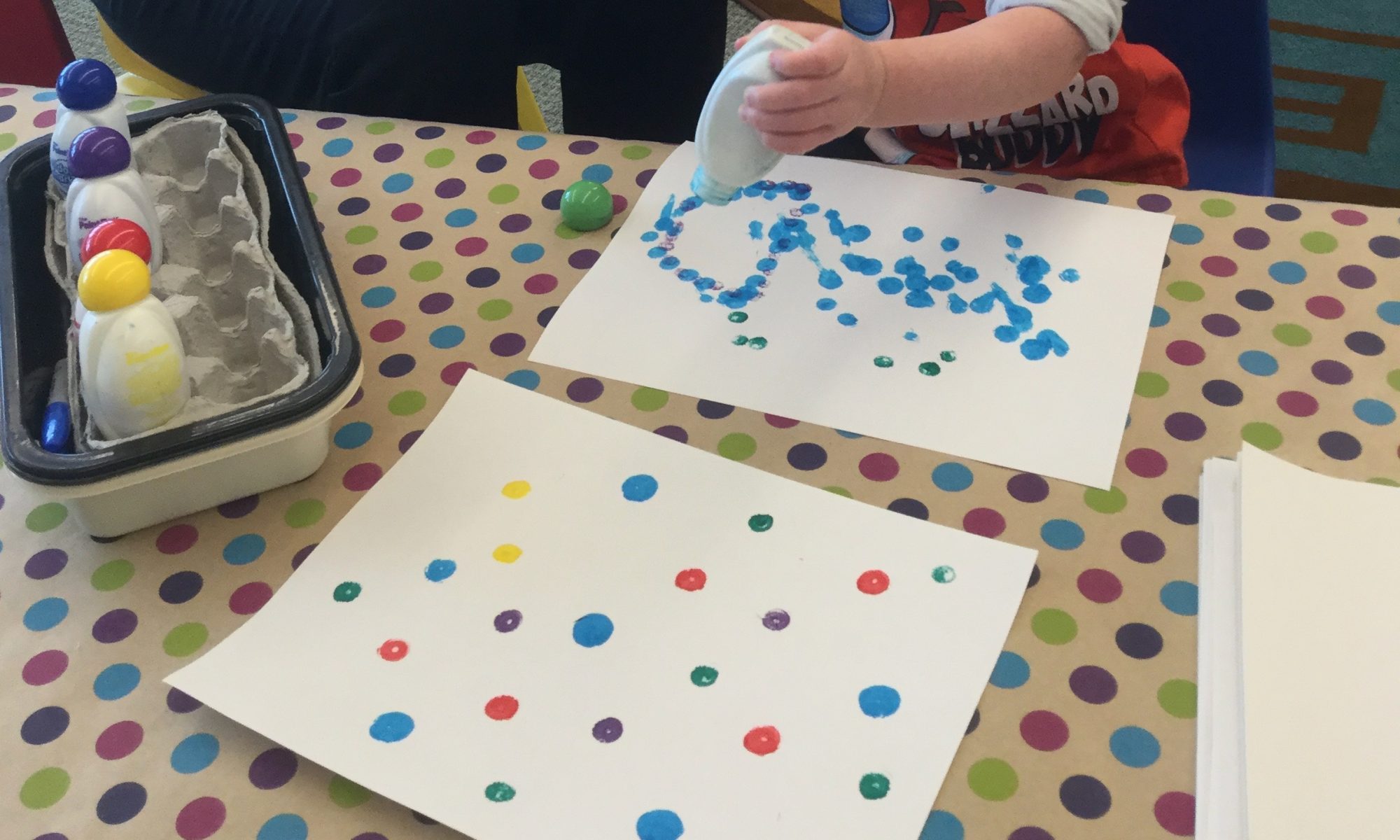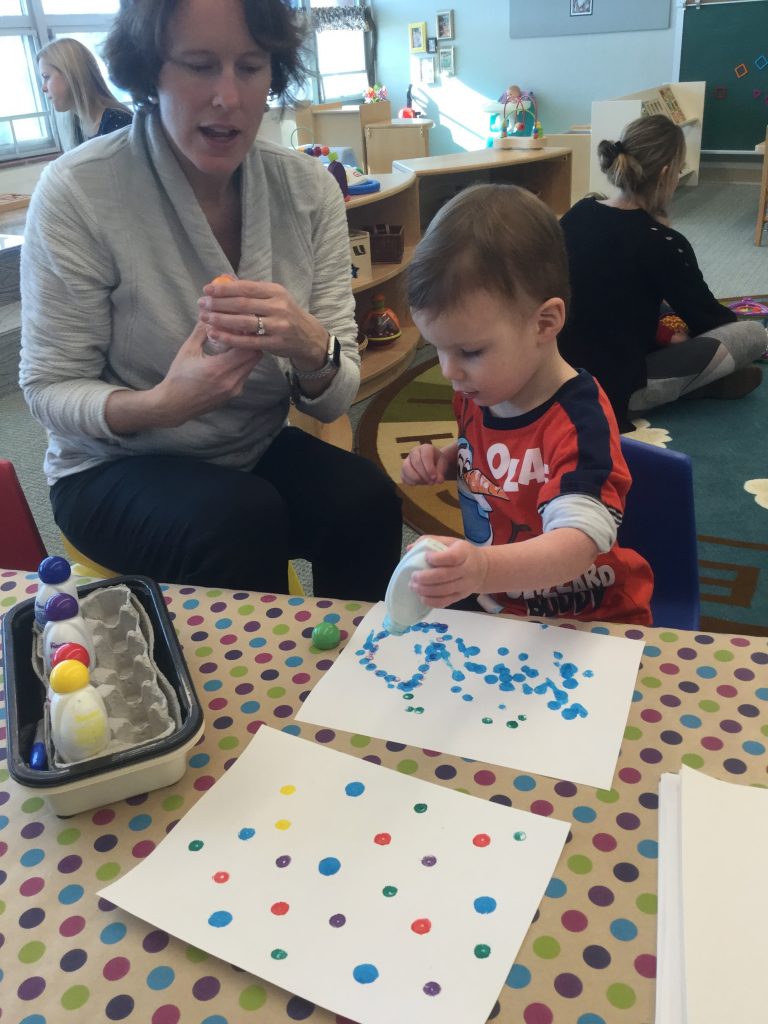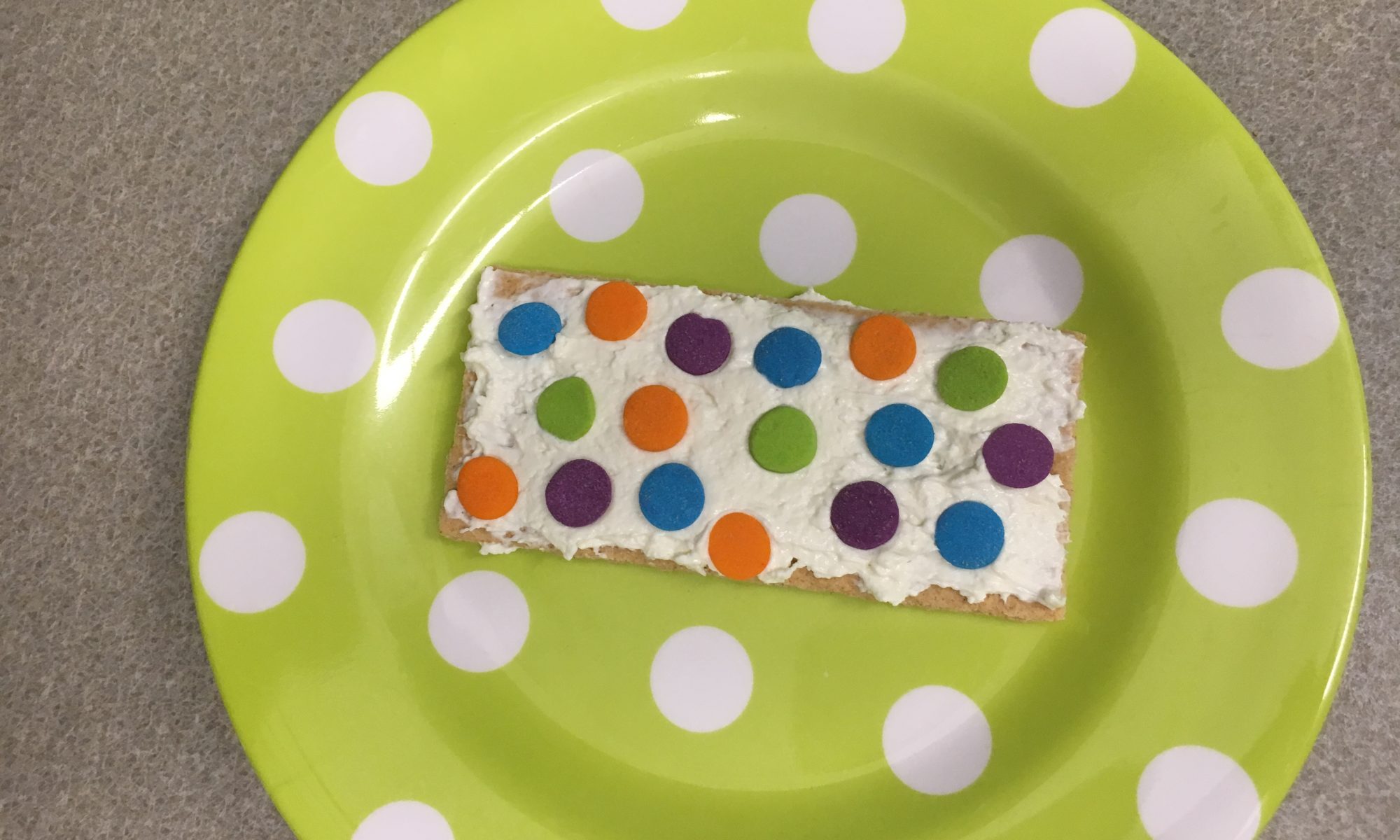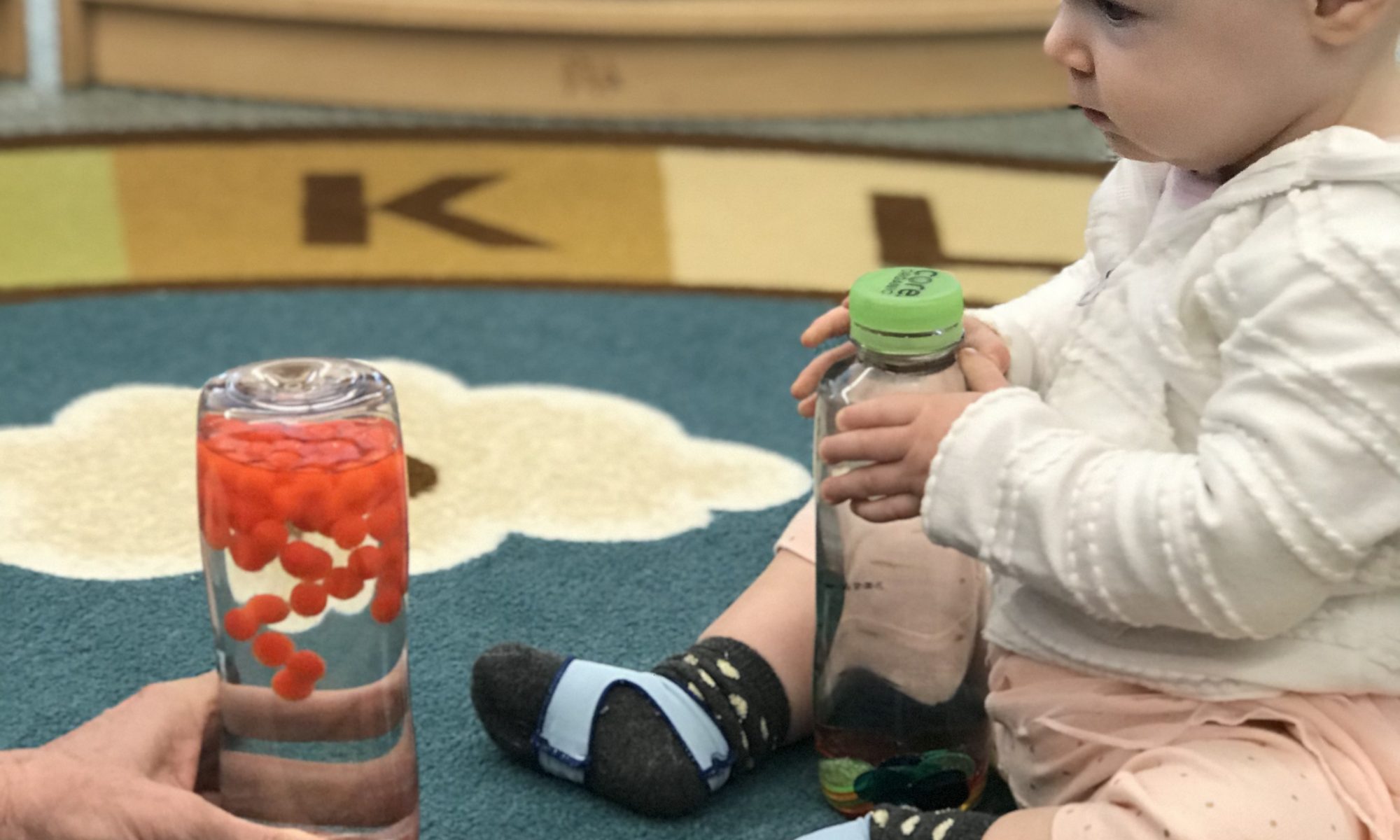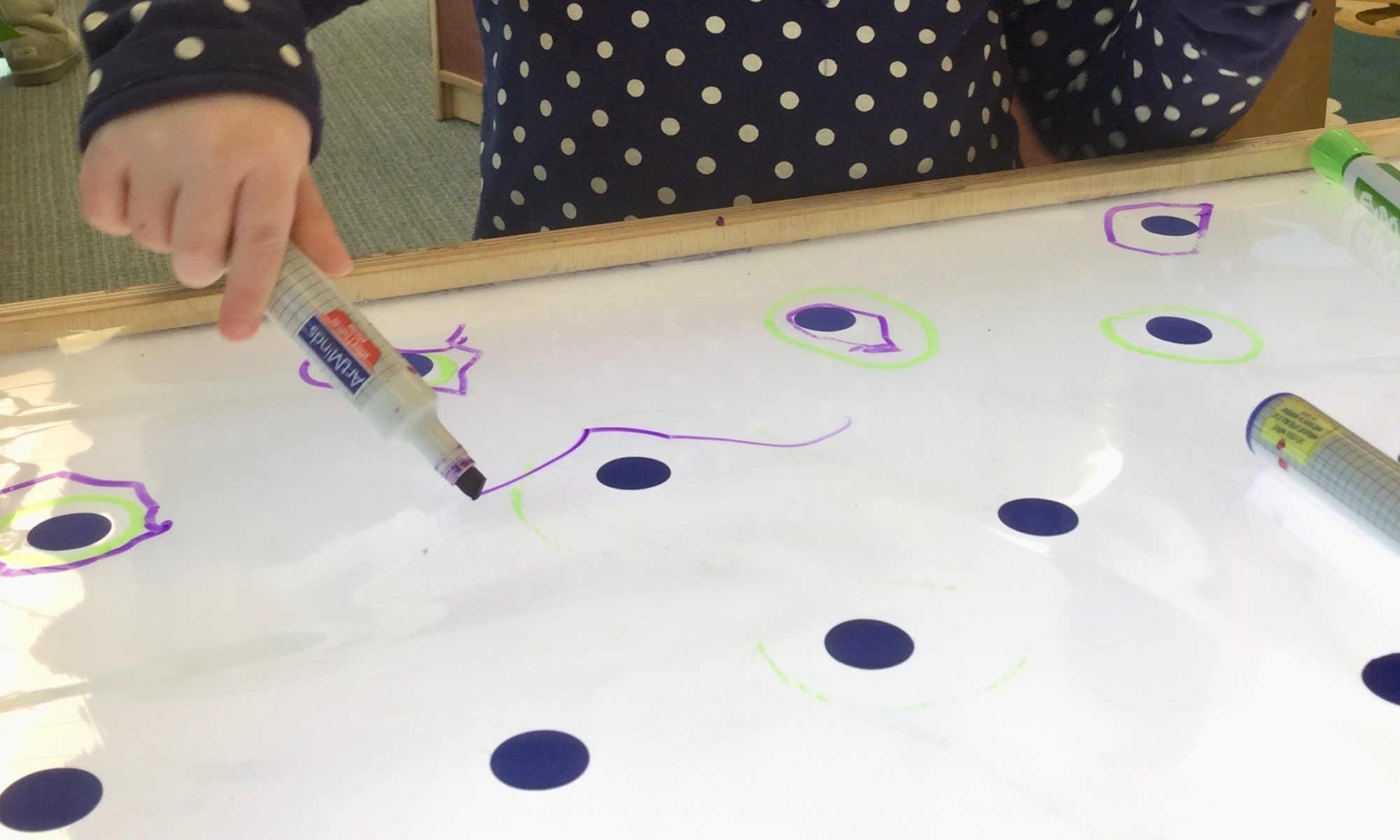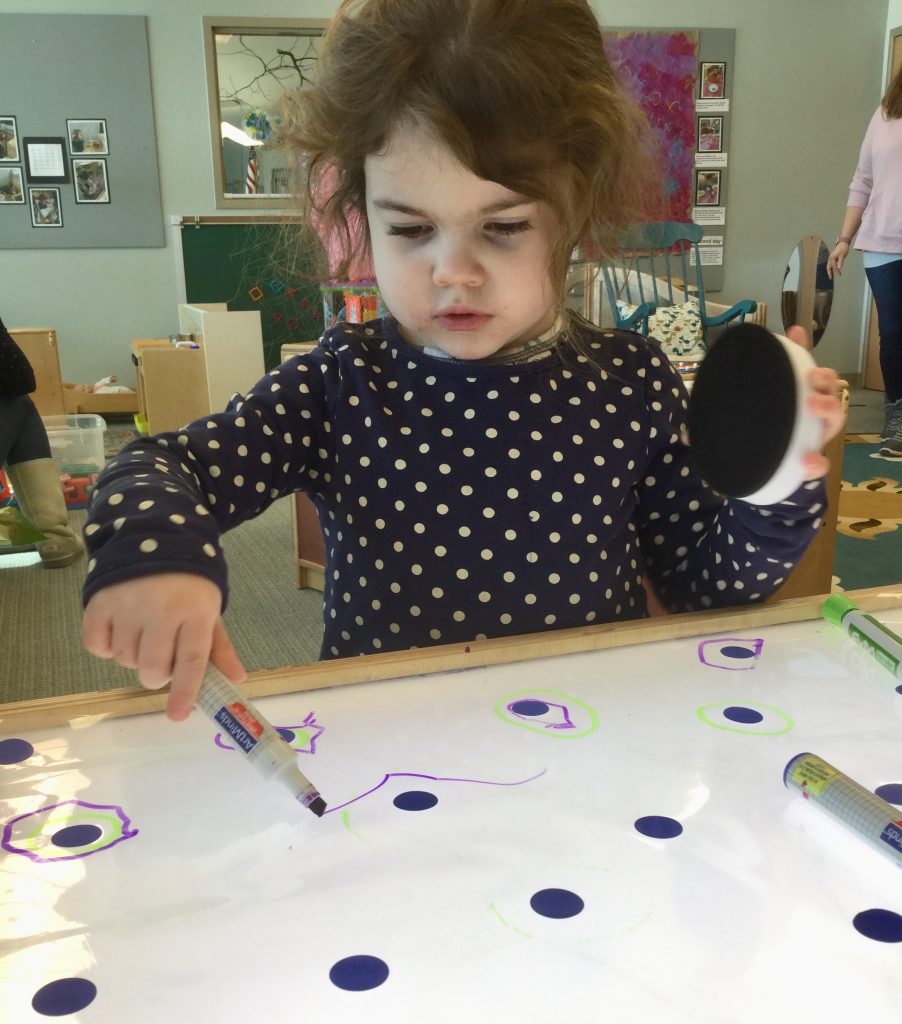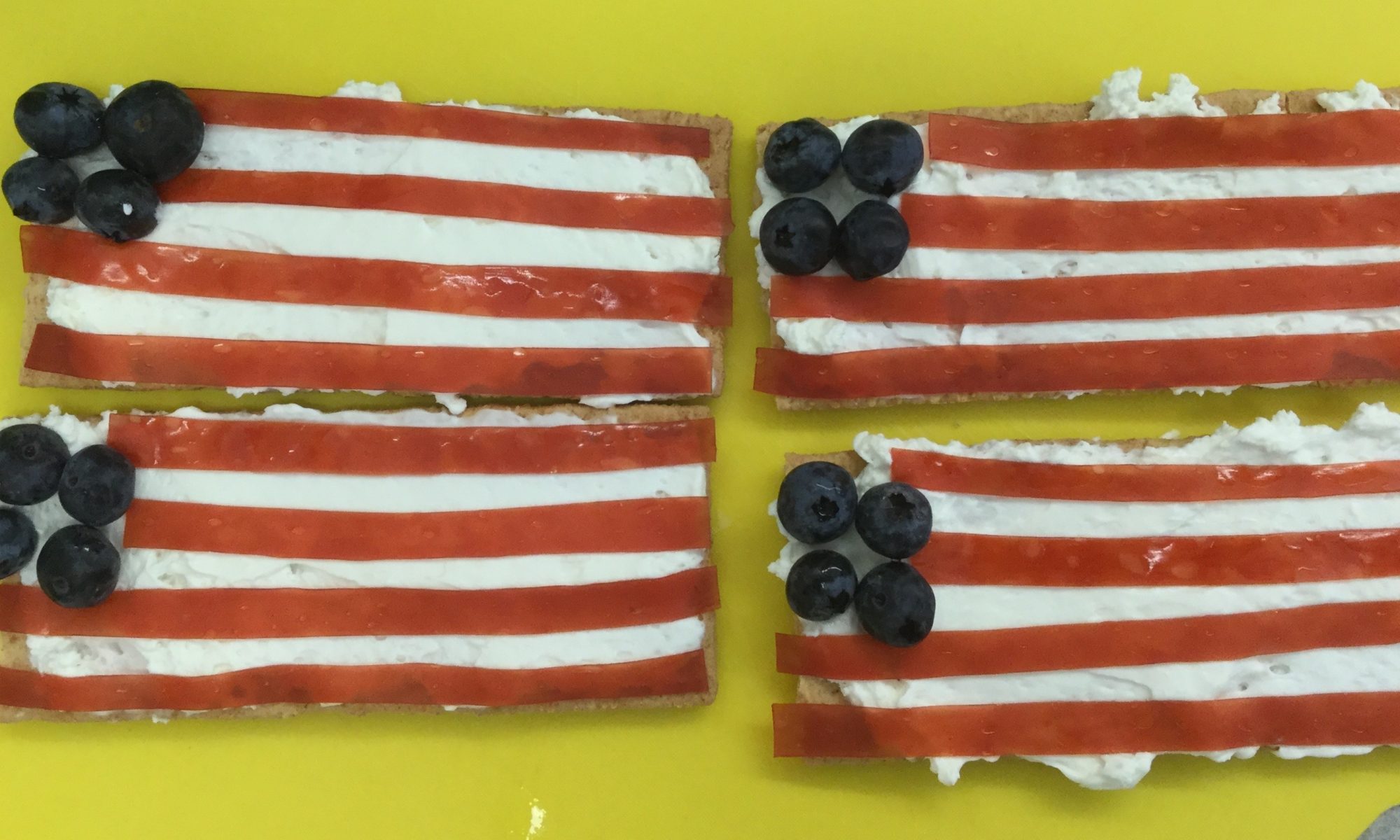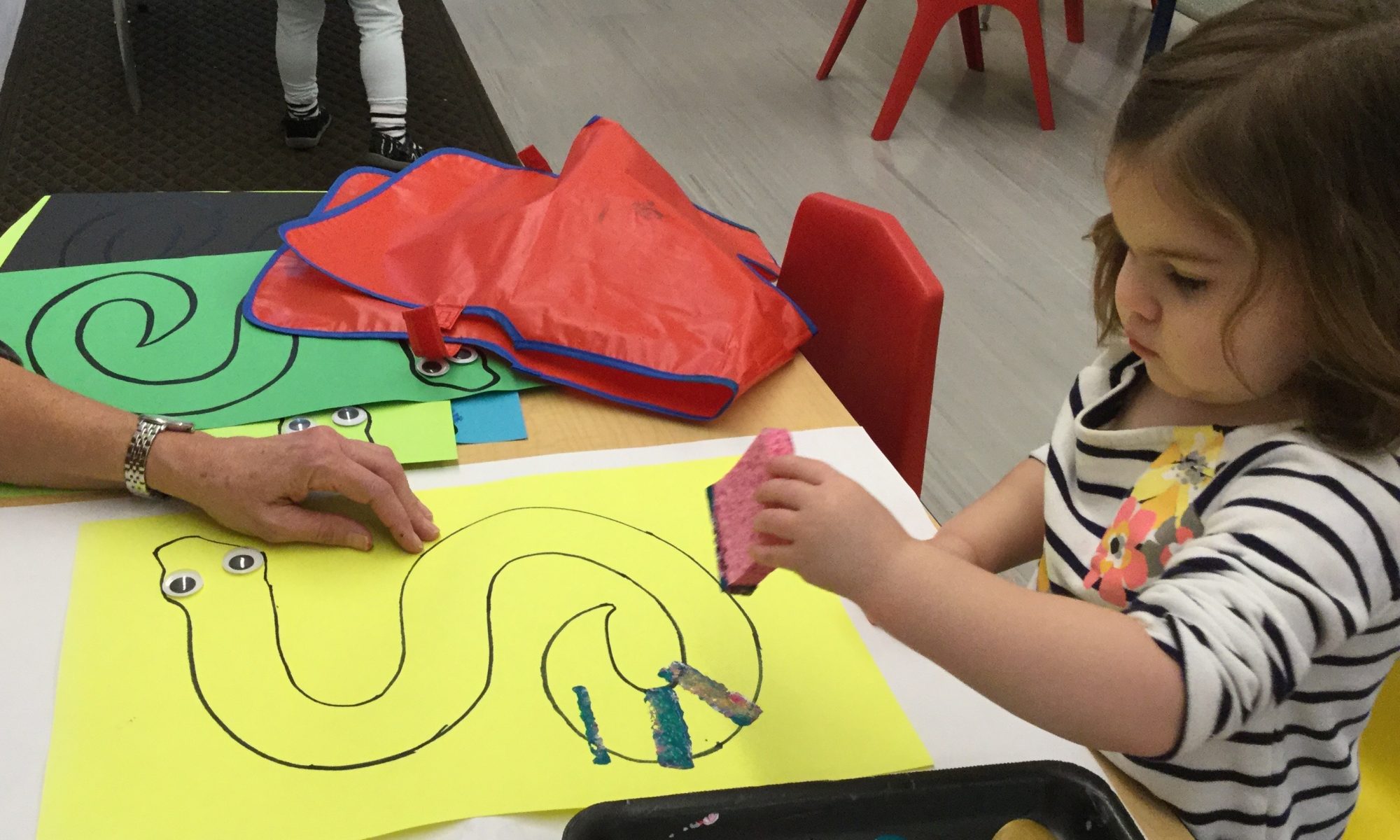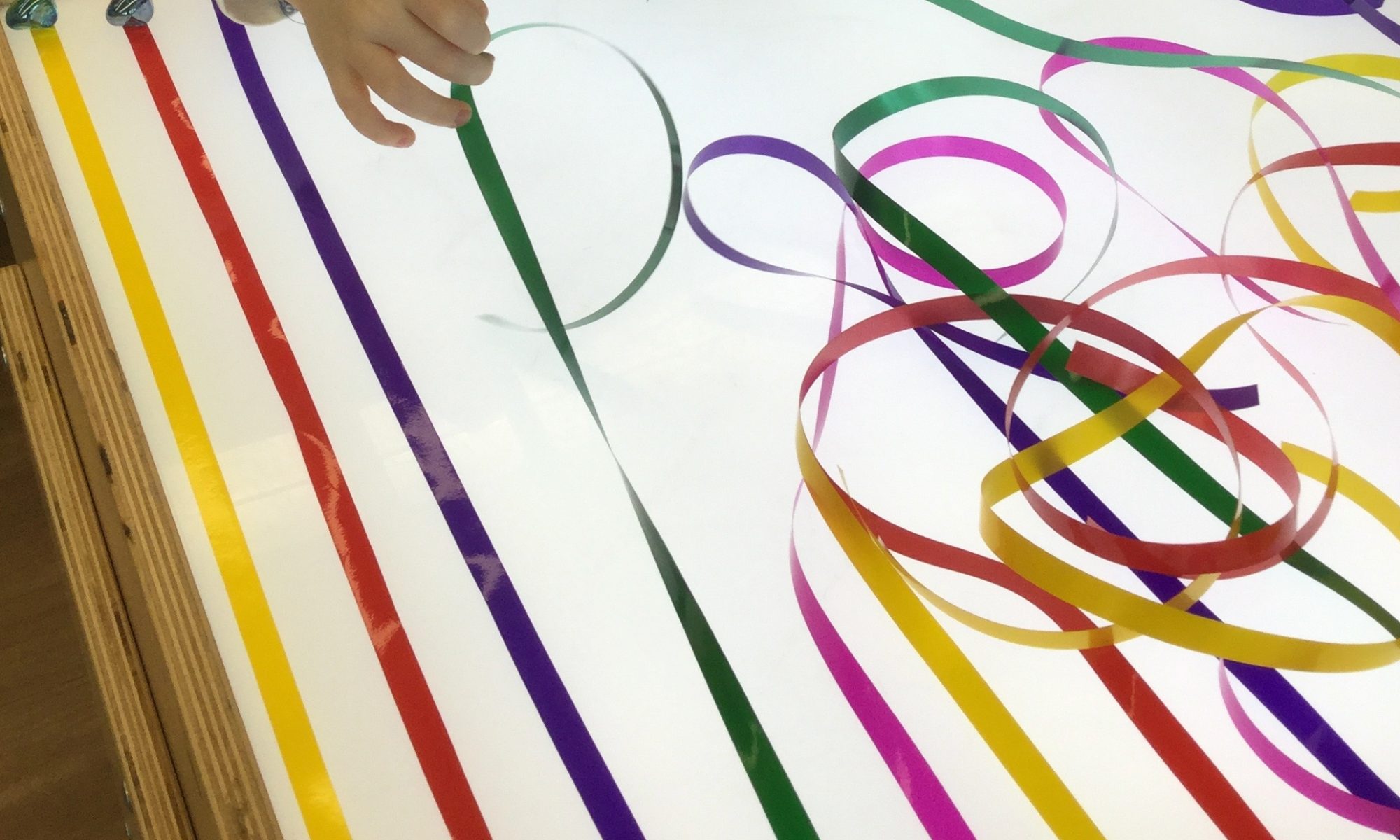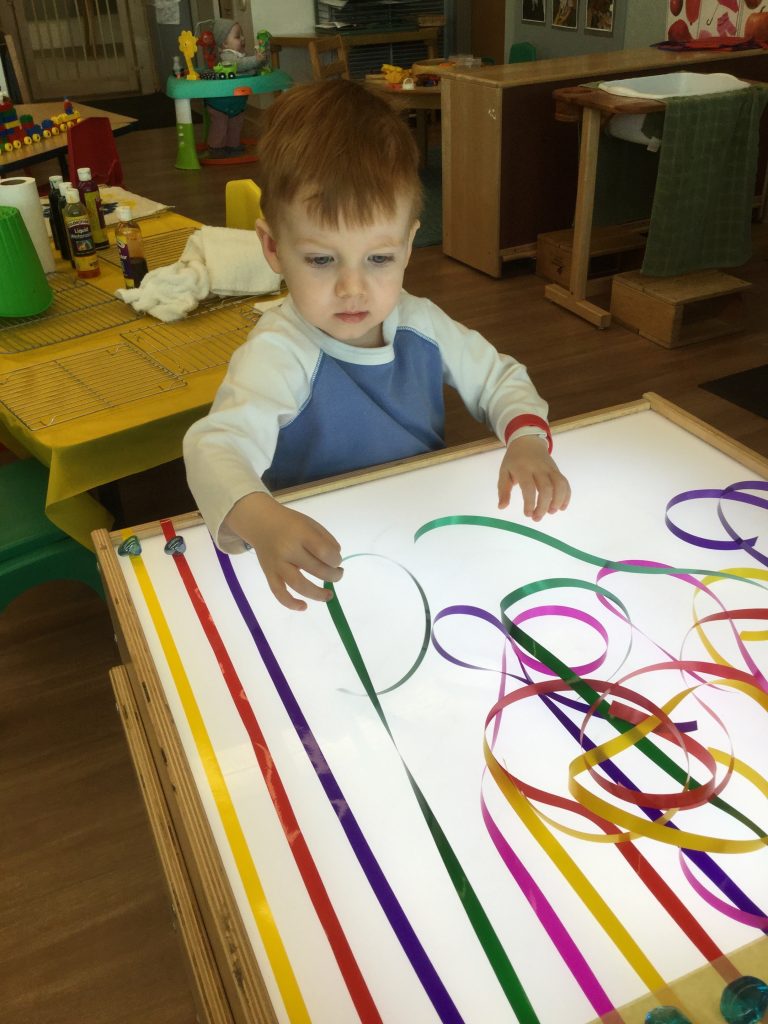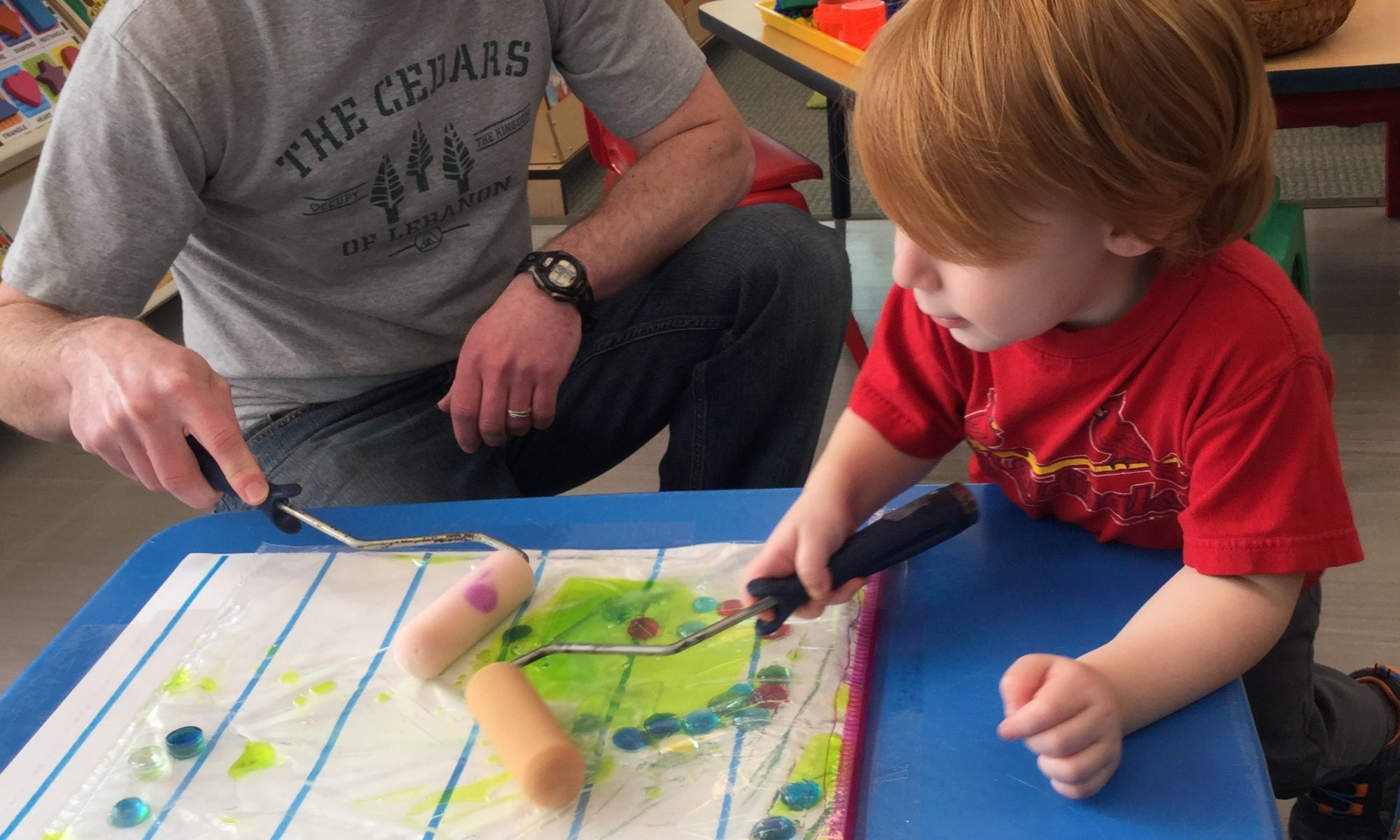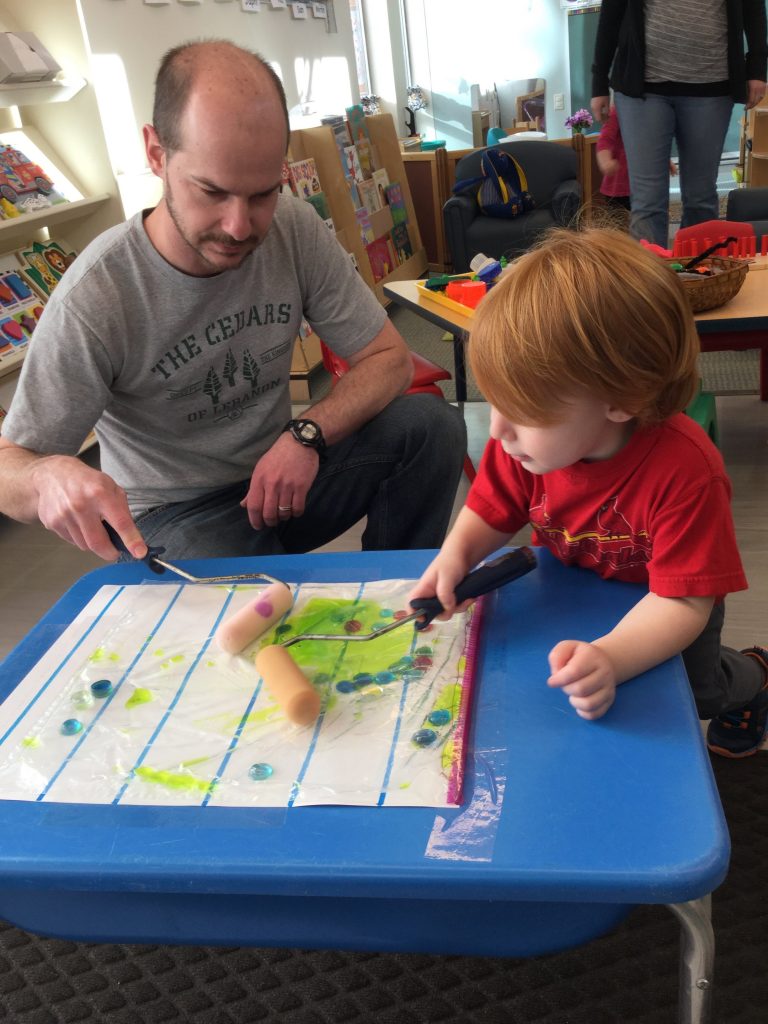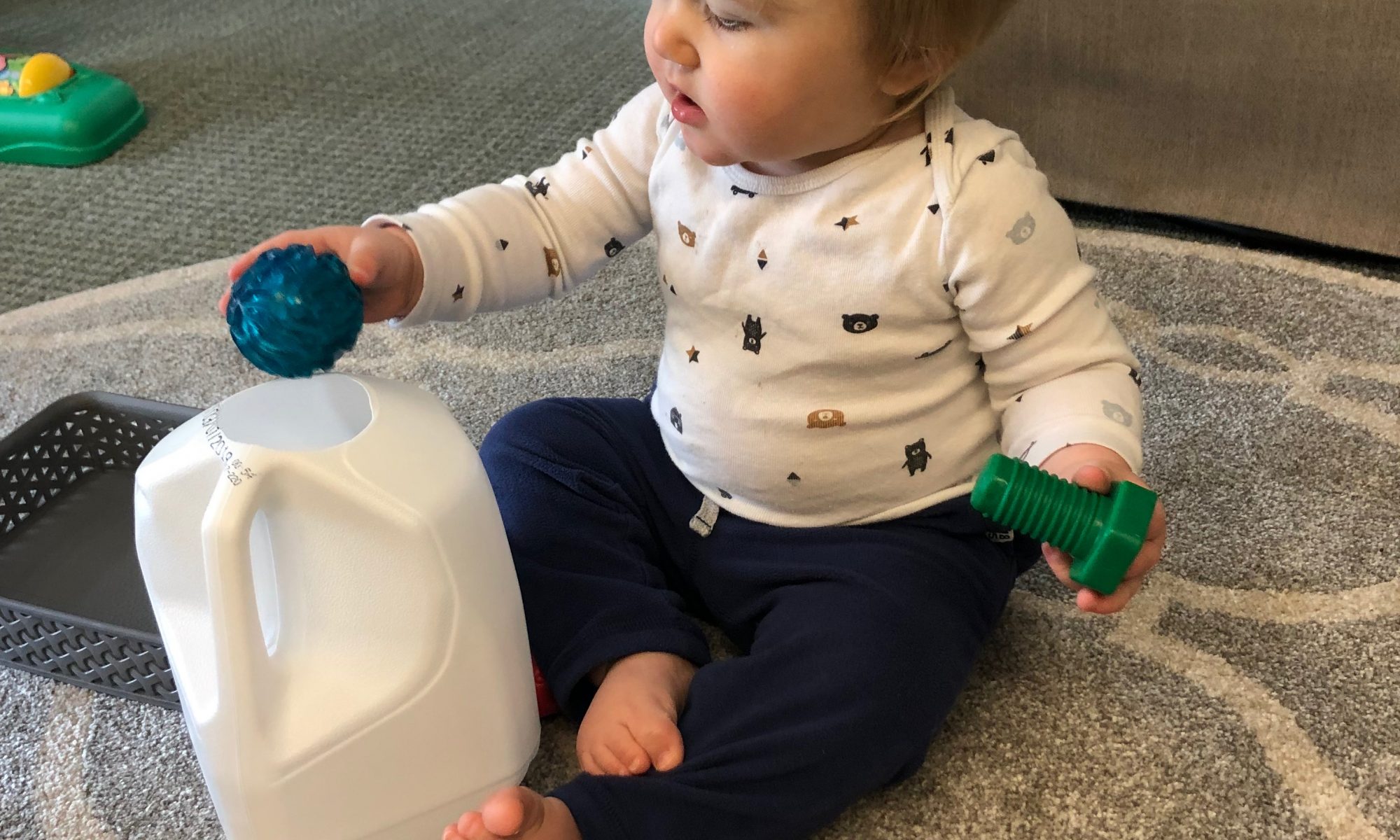Materials:
Large plastic tub
Foam sheets from a craft store
Scissors
Pen
Something round to trace—a glass, for example
Small plastic critters, bugs, etc.
Tongs (optional)
Directions: Set the glass on the foam sheet and trace around the rim. Repeat, making as many circles as you can on the sheet. Depending on the size of your tub, you may want to use more than one foam sheet. Cut out the dots. Fill the tub with about two inches of water, and scatter the polka dots on top. We added little plastic snakes, frogs, and lizards to our pond, along with tongs for picking up the critters and putting them on top of the dots. Tongs can be tricky for 1- and 2-year-olds, which is why they’re optional. The children were engaged for quite a long time putting critters on the polka dots and dumping them in the water! If your critters are small enough, they will float easily. We also had fun identifying which were lizards, which were snakes, and which were frogs.


